'Infinite Wonder': Photos from Scott Kelly's Year in Space Mission
Aurora reflection
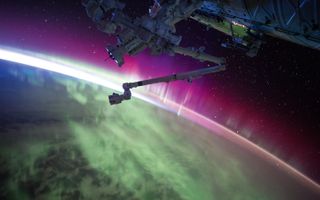
Retired NASA astronaut Scott Kelly has released a photobook, "Infinite Wonder," chronicling his 340 days on the International Space Station. Here are some selections from Kelly's time there. [Read more about the book and Kelly's thoughts on spaceflight here.]
In this image, Kelly pointed out how the aurora's vivid light reflects on the bottom of the International Space Station its robotic arm, Canadarm2.
Kelly in the window

Kelly looks out of the space station's Cupola during his 340-day mission in space. While there, he grew very used to documenting the wonders of Earth's surface. ("That's my brother, Mark," Kelly joked while presenting the picture; Kelly's twin Mark Kelly is also an astronaut, but he's not pictured here.)
Earth from above
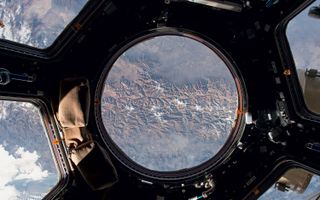
Kelly offered this photo as the best depiction of what it's like to look at Earth from space — it's likely over the Western U.S., he said, looking down from the Cupola where astronauts get the best views of their home planet.
An intricate river
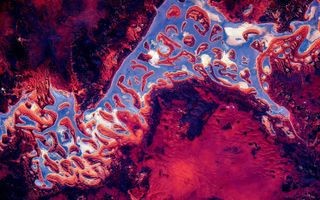
Kelly photographed Lake Wells, Western Australia, as part of a series of "Earth art" images taken from the International Space Station. Kelly liked some of those images enough to blow them up to hang in his home. Though he enhanced the colors a bit using Picasa, Kelly said he's proud that he didn't introduce any false coloring; Earth just looks that cool.
A drying wave
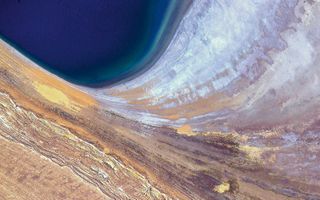
This "epic surf wave" is the South Aral Sea, a lake between Kazakhstan and Uzbekistan. Kelly points out in the book that it's one of the planet's worst environmental disasters. It had completely dried up in 2014 NASA imagery, but can be seen recovering here after a year of restoration efforts.
Lab by day

The U.S. laboratory module on the International Space Station is full of chaos; "if you had OCD you wouldn't like it," Kelly said.
Lab by night

But look at the U.S. lab at "night" (when lights are out), and it's a whole different story; this image shows the green instrument lighting and the pink glow of grow lights for the station's plant-growing experiments, Kelly said. Outside the station, day turns to night every 90 minutes.
Get the Space.com Newsletter
Breaking space news, the latest updates on rocket launches, skywatching events and more!
HTV in the rising sun
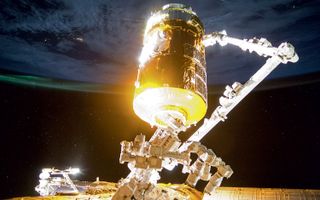
A Japanese H-II Transfer Vehicle (HTV) glows in the rising sun in a photo taken by Scott Kelly for his photobook "Infinite Wonder."
Join our Space Forums to keep talking space on the latest missions, night sky and more! And if you have a news tip, correction or comment, let us know at: community@space.com.

Sarah Lewin started writing for Space.com in June of 2015 as a Staff Writer and became Associate Editor in 2019 . Her work has been featured by Scientific American, IEEE Spectrum, Quanta Magazine, Wired, The Scientist, Science Friday and WGBH's Inside NOVA. Sarah has an MA from NYU's Science, Health and Environmental Reporting Program and an AB in mathematics from Brown University. When not writing, reading or thinking about space, Sarah enjoys musical theatre and mathematical papercraft. She is currently Assistant News Editor at Scientific American. You can follow her on Twitter @SarahExplains.
